
The Royal County of Berkshire, commonly known as simply Berkshire, is a ceremonial county in South East England. It is bordered by Oxfordshire to the north, Buckinghamshire to the north-east, Greater London to the east, Surrey to the south-east, Hampshire to the south, and Wiltshire to the west. Reading is the largest settlement and the county town.

William Butterfield was a British Gothic Revival architect and associated with the Oxford Movement. He is noted for his use of polychromy.
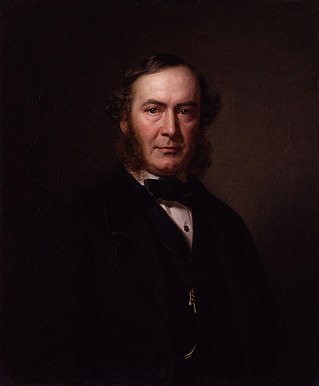
John Thadeus Delane, editor of The Times (London), was born in London.
The Queen Elizabeth II Jubilee Stakes is a Group 1 flat horse race in Great Britain open to horses aged four years or older. Three-year-olds foaled in the Southern Hemisphere are also eligible. It is run at Ascot over a distance of 6 furlongs, and it is scheduled to take place each year in June.
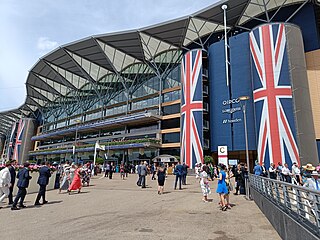
Ascot Racecourse is a dual-purpose British racecourse, located in Ascot, Berkshire, England, about 25 miles west of London. Ascot is used for thoroughbred horse racing, and it hosts 13 of Britain's 36 annual Flat Group 1 horse races and three Grade 1 Jumps races.

Ascot is a town in the Royal Borough of Windsor and Maidenhead in Berkshire, England. It is 6 miles (9.7 km) south of Windsor, 4 miles (6.4 km) east of Bracknell and 25 miles (40 km) west of London.

The social season, or season, refers to the traditional annual period in the spring and summer when it is customary for members of the social elite of British society to hold balls, dinner parties and charity events. Until the First World War, it was also the appropriate time to be resident in the city rather than in the country in order to attend such events.
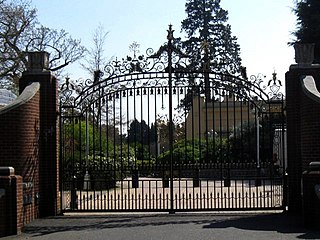
Tittenhurst Park is a Grade II listed early Georgian country house set in 72 acres off London Road at Beggar's Bush near Ascot and over the parish border into Sunningdale, both in the English county of Berkshire. It was famously the home of musicians John Lennon and Yoko Ono from the late summer of 1969 until August 1971, and then the home of Ringo Starr and family from 1973 until 1988. Starr sold the property to Sheikh Zayed bin Sultan Al Nahyan, President of the United Arab Emirates, in 1989.
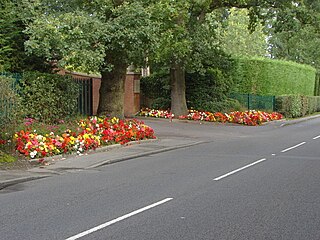
Windlesham Moor is a country house and, for a time in the 20th century a royal residence, at Windlesham in the English county of Surrey. In its capacity as a royal residence, it was, for nearly two years in the late 1940s, the home of Princess Elizabeth and her husband Philip, Duke of Edinburgh.
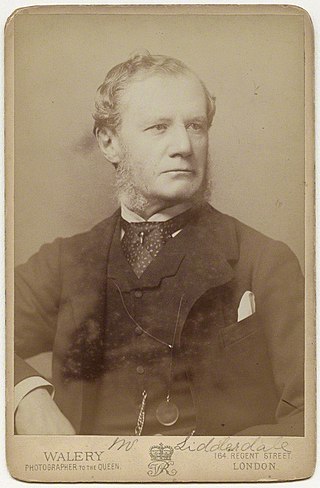
William Lidderdale was a British merchant, and governor of the Bank of England between 1889 and 1892.

George William Coventry, 9th Earl of Coventry,, styled Viscount Deerhurst from November 1838 until 1843, was a British Conservative politician. He was Captain of the Gentlemen-at-Arms between 1877 and 1880 and again between 1885 and 1886 as well as Master of the Buckhounds between 1886 and 1892 and again between 1895 and 1901.
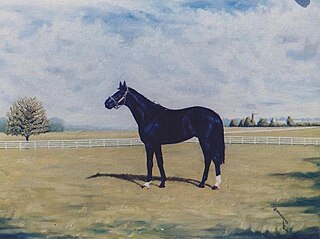
The Coventry Stakes is a Group 2 flat horse race in Great Britain open to two-year-old horses. It is run at Ascot over a distance of 6 furlongs, and it is scheduled to take place each year in June.
The Jersey Stakes is a Group 3 flat horse race in Great Britain open to three-year-old horses. It is run at Ascot over a distance of 7 furlongs, and it is scheduled to take place each year in June.

Swinley Forest is a large expanse of Crown Estate woodland managed by Forestry England mainly within the civil parishes of Windlesham in Surrey and Winkfield and Crowthorne in Berkshire, England.
Helen Monica Mabel Vernet (1875–1956) was the first woman in the history of horse racing in Great Britain to be granted a license to legally carry out business as a bookmaker on a racecourse.

Robert Kerr was a British architect, architectural writer and co-founder of the Architectural Association.

Eagle Farm Racecourse and Ascot Railway station is a heritage-listed pair of racecourse and railway station at 230 Lancaster Road, Ascot, City of Brisbane, Queensland, Australia. It was built from 1863 onwards. The racecourse is also known as Ascot Racecourse and Brisbane Racecourse, and Ascot railway station was previously known as Racecourse railway station. It was added to the Queensland Heritage Register on 25 June 2004.
Fernhill Park is a landed private estate and country house, situated on the edge of the village of Cranbourne in the civil parish of Winkfield in the English county of Berkshire, within the former bounds of Windsor Forest, four miles from Windsor, and in close vicinity of the Windsor Great Park.

Bearwood or Bear Wood, Sindlesham, Berkshire, England is a Victorian country house built for John Walter, the owner of The Times. The architect was Robert Kerr and the house was constructed between 1865 and 1874. The family fortune had been made by Walter's grandfather, John Walter I. Originally a coal merchant and underwriter, in 1785 John Walter had established The Daily Universal Register, renamed as The Times in 1788. In 1816, Walter's father, John Walter II purchased the Bear Wood estate in Berkshire from the Crown Estate and in 1822 built a small villa on the site of the present house. Nothing remains of this first building, which was swept away in the gargantuan rebuilding undertaken by Kerr for John Walter III. The cost, £129,000, equivalent to £12,741,576 in 2021, was double the original estimate.


















